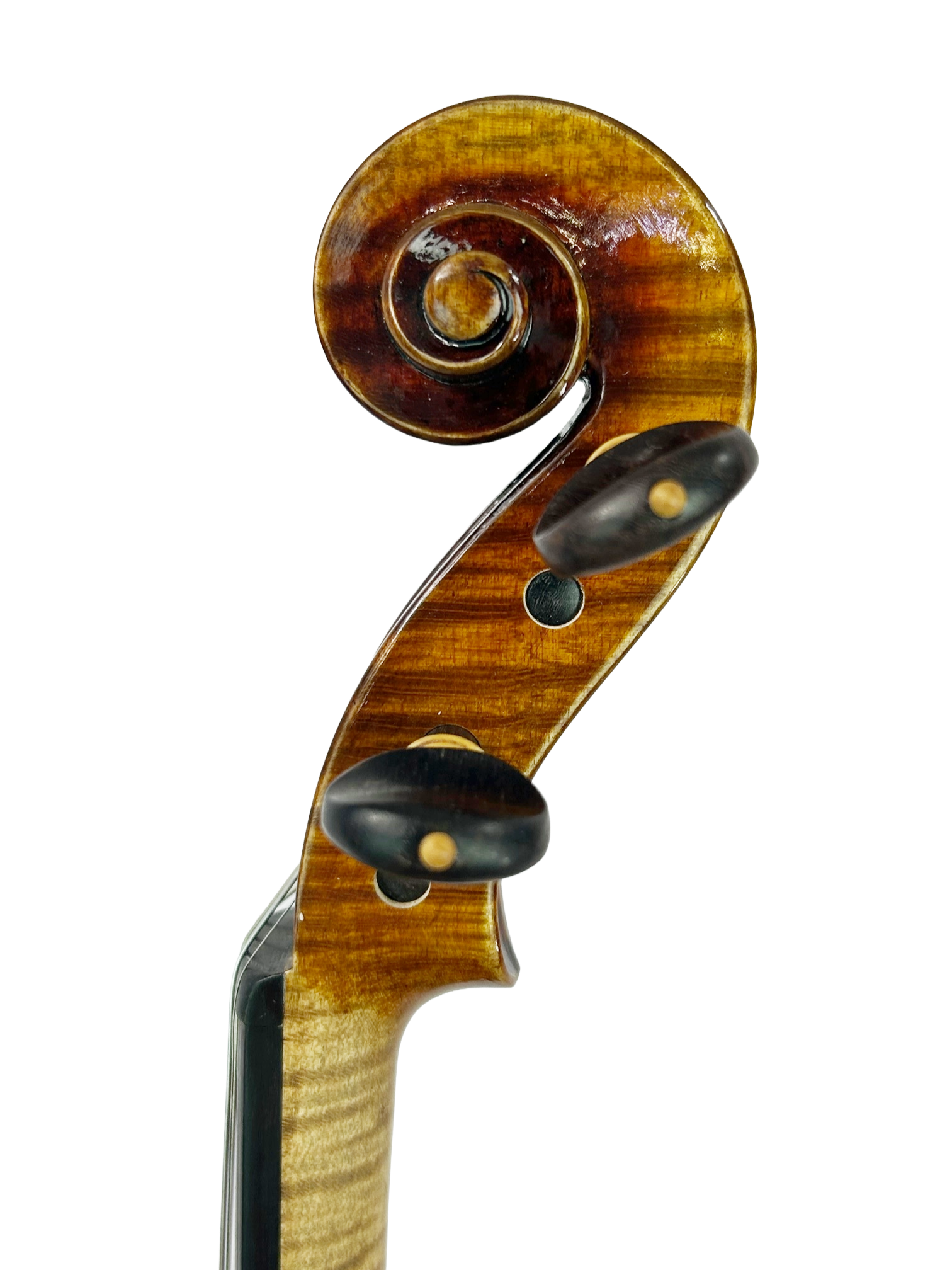 Image 1 of 16
Image 1 of 16

 Image 2 of 16
Image 2 of 16

 Image 3 of 16
Image 3 of 16

 Image 4 of 16
Image 4 of 16

 Image 5 of 16
Image 5 of 16

 Image 6 of 16
Image 6 of 16

 Image 7 of 16
Image 7 of 16

 Image 8 of 16
Image 8 of 16

 Image 9 of 16
Image 9 of 16

 Image 10 of 16
Image 10 of 16

 Image 11 of 16
Image 11 of 16

 Image 12 of 16
Image 12 of 16

 Image 13 of 16
Image 13 of 16

 Image 14 of 16
Image 14 of 16

 Image 15 of 16
Image 15 of 16

 Image 16 of 16
Image 16 of 16

















Donato Guarneri Line- Nicolò Amati 1666 Violin 4/4 Size VN990A-1666
The Amati 1666 violin stands as one of the great milestones in the story of Cremonese violin making. Crafted by Nicolò Amati, the last and most renowned member of the Amati family, it was built at a time when the art of violin making was reaching its peak in northern Italy. Nicolò had inherited not only the workshop of his father Girolamo but also the responsibility of refining the family style, which had already defined the shape and voice of the modern violin.
By 1666, Nicolò’s instruments had taken on the graceful outlines and higher arching that gave them their trademark sweetness and clarity of tone. It was in this very year that a young apprentice by the name of Antonio Stradivari is believed to have been in his workshop, learning the art of carving from the master himself. For that reason, the 1666 Amati violins are sometimes connected to Stradivari’s earliest works, making them historically significant not only as instruments but as markers of transition in Cremona’s golden age.
This particular violin, with its elegant curves, delicate purfling, and golden-brown varnish, reflects the careful artistry of Amati’s hand. Its sound is known for purity and refinement, with a singing treble and warm resonance that continues to captivate musicians centuries after its creation. Today, the Amati 1666 is cherished as both a masterpiece of craftsmanship and a living link to the birth of the Cremonese tradition that shaped all violin making to come.
The Amati 1666 violin stands as one of the great milestones in the story of Cremonese violin making. Crafted by Nicolò Amati, the last and most renowned member of the Amati family, it was built at a time when the art of violin making was reaching its peak in northern Italy. Nicolò had inherited not only the workshop of his father Girolamo but also the responsibility of refining the family style, which had already defined the shape and voice of the modern violin.
By 1666, Nicolò’s instruments had taken on the graceful outlines and higher arching that gave them their trademark sweetness and clarity of tone. It was in this very year that a young apprentice by the name of Antonio Stradivari is believed to have been in his workshop, learning the art of carving from the master himself. For that reason, the 1666 Amati violins are sometimes connected to Stradivari’s earliest works, making them historically significant not only as instruments but as markers of transition in Cremona’s golden age.
This particular violin, with its elegant curves, delicate purfling, and golden-brown varnish, reflects the careful artistry of Amati’s hand. Its sound is known for purity and refinement, with a singing treble and warm resonance that continues to captivate musicians centuries after its creation. Today, the Amati 1666 is cherished as both a masterpiece of craftsmanship and a living link to the birth of the Cremonese tradition that shaped all violin making to come.

